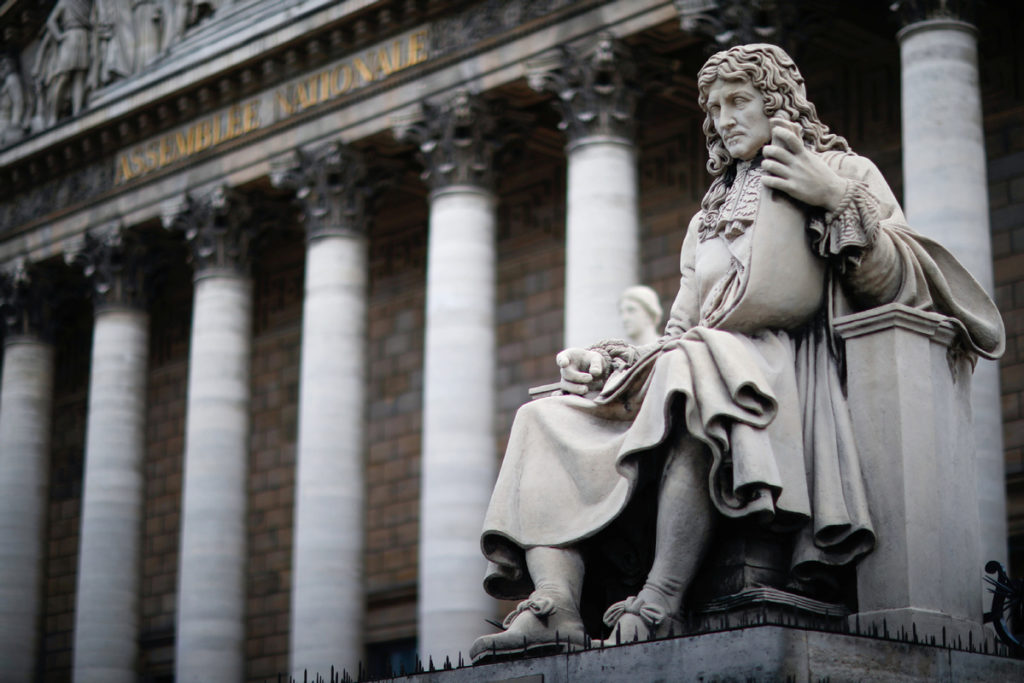Debate rages over fate of controversial political statues
People have started to look more closely at statues, to question them, and in several cases, pull them down.
In the United States, statues associated with the Civil War (1861-65) fought over the issue of slavery have long been a battle ground, but the impact of the George Floyd case has been just as big and arguably even more contentious in Europe, where in many cases, people’s awareness of their own countries’ checkered racial history is not so high. So when unwelcome ghosts are stirred up, what is the best way to deal with their monuments?
One part of the world that has already faced a similar dilemma is Central and Eastern Europe.
Statues were a major tool in the former Soviet Union’s dominance over its satellites, but when the bloc fell apart in the early 1990s, a significant amount of politically charged debris was left behind.
While many were pulled down, in the Hungarian capital Budapest, a sculpture park called Memento Park was created. A generation later, 42 monuments telling the story of a complex time in national history stand in a neutral setting, to be understood and learned from.
“A minority of people wanted to destroy them but obviously we could not get rid of that period of our history,” Memento Park guide Dora Szkuklik said.
These statues used to dominate, and they recall that era, so the council let each district decide what to do with them. Now about 90 percent of the city’s old leftist statues are left in Memento Park.
“People realized that these were important monuments, and we have tourists from all over the world, and students from home and abroad, who come here to learn about them.”
Hungary’s former president Arpad Goncz said Memento Park emphasizes “the dignity of democracy and the responsibility of historical thinking”. Contemporary Hungary is a lifetime away from how the country was less than three decades ago, but the park’s contents remain divisive.
“There are still people who grew up in the 60s and 70s who say it was a great time,” said Szkuklik.
A bit of nostalgia
She said there is a bit of nostalgia but the era is still divisive.
“It’s a great example of how we can deal with our past without destroying it,” she continued. “It’s important to show the young generation we can make decisions without aggression. There are different opinions, but we can live together and discuss those opinions.”
Antony Kalashnikov, from the University of Alberta in Canada, has written extensively about monuments in the post-Soviet era.
He said their interpretation can change significantly over time. “A phrase the Soviets used to use was ‘immortalisation of memory’-a monument was not just put up for contemporaries, but for future generations,” he said.
“But people are, for the most part, quite neutral about them now. It takes a political language to activate these monuments and make them meaningful in every generation,” he said.
A Lenin monument, for example, is not directly promoting Leninism now. If you do not have any discussion around these monuments, and they are not related to politics any more, they become neutral, said Kalashnikov.
But the climate created by the death of George Floyd in the US has made many age-old monuments more contemporary than ever.
Patrick Vernon is a fellow of the Royal Historical Society, and he said the toppling of the statue of slave owner Edward Colston in the British city of Bristol was hugely significant.
“I’d equate it to the opening of the Berlin Wall,” he said. “It reminds people of part of Britain’s past of which the majority of people are totally unaware, and it’s led to a conversation we should have had a long time ago.”
But simply toppling symbols of the past and outdated values is not enough. “It’s not just about what should go or stay, but it’s also about new symbols-there are more statues of cats and dogs in the United Kingdom than there are of people of color,” he said.
“More than 10 million people died in the transatlantic slave trade, and Britain was the biggest beneficiary. Years ago we were given a plot of land for a memorial to them in Hyde Park, but if people don’t know their history, how can we raise money for it?”
Museums and archives need to have a wider remit than just putting in statues, said Vernon, but he remains hopeful the current debate might open a wider conversation.
Turning point
Jean-Francois Manicom from the International Slavery Museum in Liverpool agrees the toppling of Colston could be a turning point, but sees the future of statues being in a different direction.
“This is a debate that, globally, society needs. We are now in a period when we are interrogating what is sacred, what are myths and who are heroes. This is clearly opening the debate,” he said.
“A statue park is an interesting idea, but maybe we really need is a cemetery for them and the old values they represent. In the way statues are formally unveiled and opened, maybe we can formally close them down. It could be public and explained. That way, it would be more than just the statue that was laid to rest.”
